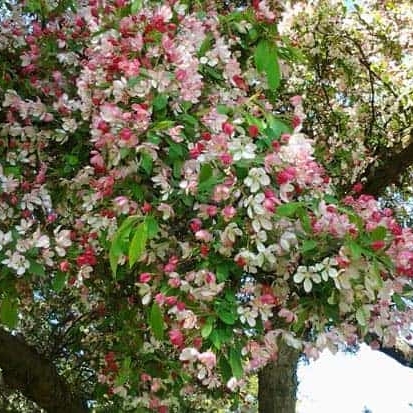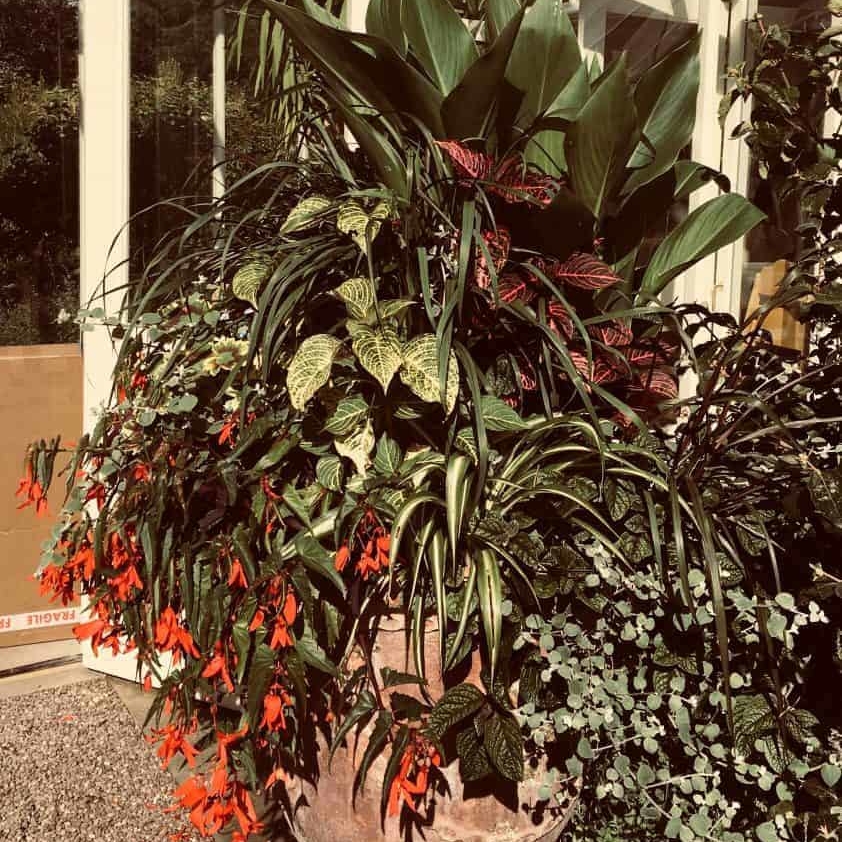Any plants with two distinct seasons of interest are really valuable when creating interest in a small space. It is even more important when choosing an ornamental tree they are suitable. Eventual height, spread and impact are important
Dual purpose trees need to offer a spectacular display in spring when they burst into leaf, (and hopefully blossom) and a second appearance as star of the show with either, their autumn colour, fruits or even winter bark.
Prunus serrula can have masses of white single or semi-double blossom are produced in spring. Small fruits are produced in summer followed by a golden autumn leaf colour. It has shiny copper coloured bark that makes the tree one of the most stunning for winter display.
If a bit more flower power is what you want from your dual purpose tree then another flowering cherry suited to a smaller space is Prunus ‘Royal Burgundy’. This sports a profusion of double pink flowers in spring which look stunning against the natural burgundy foliage which develops a deep red autumn colour before falling.
Fruiting is not so good because the double flowers are often sterile. The spring and autumns displays are spectacular with the bonus of the dark burgundy foliage throughout the growing season.
Prunus ‘Kanzan’ or the ‘Japanese’ cherry is also a very reliable tree for spring blossom. It is a medium vigorous tree that thrives on free draining soils. Therefore it needs a little space to spread but can tolerate poorer soil conditions. Prunus ‘Kanzan’ covered in double pink blossom in springtime when young foliage is also a rich coppery colour. The foliage turns green for the summer and then brilliant coppery red in the autumn.
When selecting a dual purpose tree we should not forget to consider the ‘flowering crabs’. These are small, ornamental apple trees which all produce masses of apple blossom in the spring. This is then followed by colourful fruits in the autumn. These provide a good source of pectin for anyone who enjoys making their own jams and jellies and if left on the tree (or the ground), a great source of winter energy for our native birds.
Malus ‘Golden Hornet’ has stunning autumn interest, its boughs covered in the small golden coloured fruits. Malus floribunda is incredible for its blossom and Malus ‘Rudolph’ not only produces deep pink flowers but good autumn leaf colour.
It can tolerate heavier soil and a more exposed position.
If a garden is exposed to strong winds then shelter should be considered, especially for protecting the delicate cherry blossoms. If shelter cannot be provided then the crab apples are a better choice.
Caroline Wright
Caroline brings decades of horticultural experience, both practical and theoretical. Having lectured at Brackenhurst Horticultural University for many years, Caroline has now relocated to France and is following her passion for growing plants and teaching. Caroline and her husband Paul run the plant nursery, propagating all of the plants themselves and lead a wide selection of fun and interactive horticultural and craft based courses.



